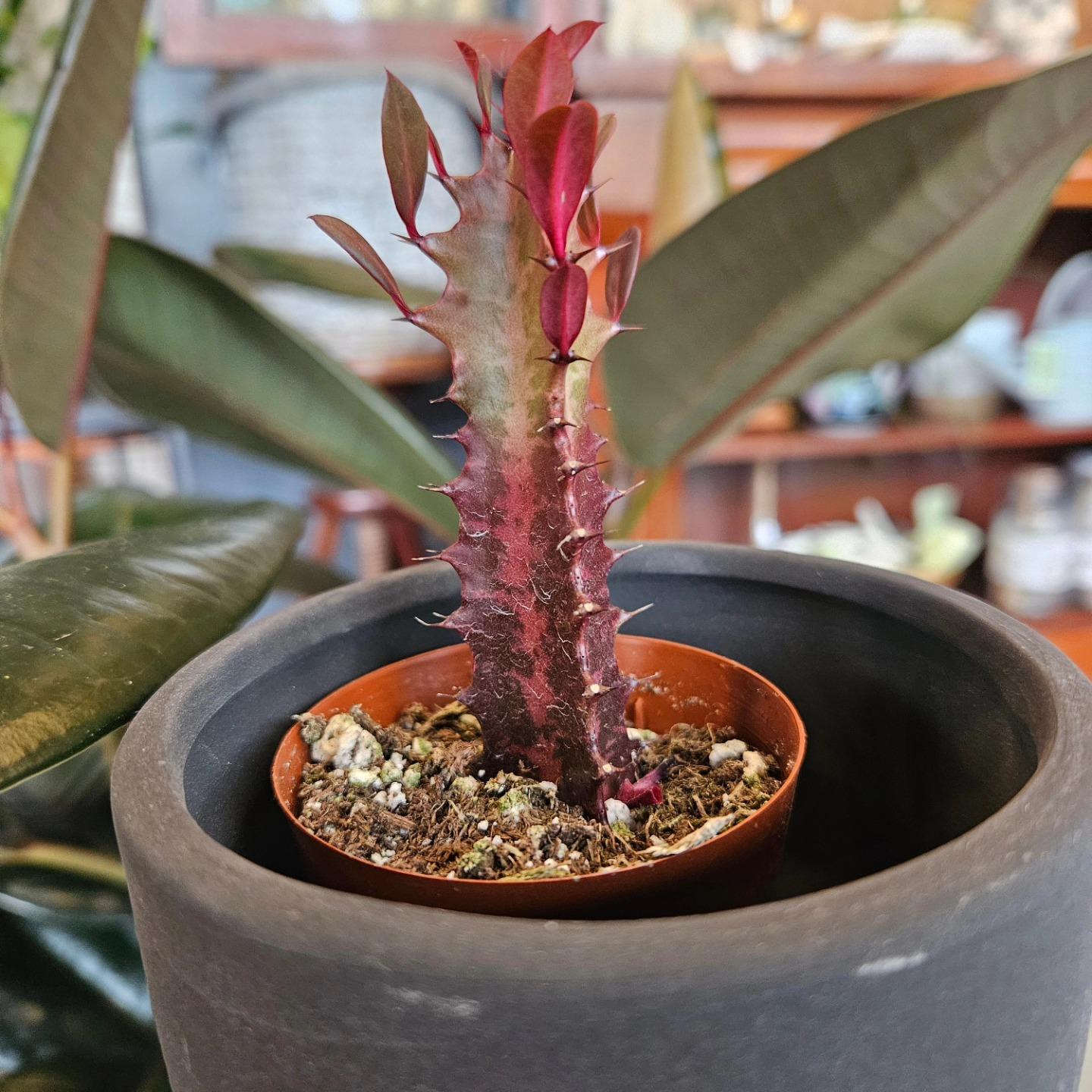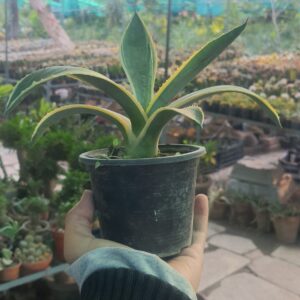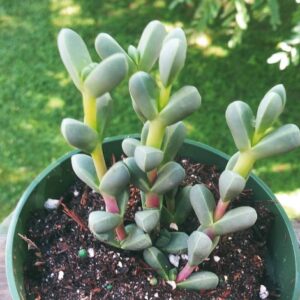🌿✨ Devil’s Milk Tree (Euphorbia tithymaloides)
Also known as Devil’s Backbone, Redbird Cactus, Slipper Plant
The Devil’s Milk Tree, scientifically named Euphorbia tithymaloides, is an unusual succulent-like shrub famous for its zigzag, zigzagging stems and vibrant red or pink bracts resembling small birds or slippers. Despite the cactus-like appearance, it belongs to the Euphorbia family, not the cactus family.
Its nickname, Devil’s Milk Tree, comes from the toxic milky sap that oozes when the plant is cut or damaged. This sap can be an irritant to skin and eyes, so handling with care is important.
🌿 Botanical Overview
Scientific Name: Euphorbia tithymaloides
Family: Euphorbiaceae
Common Names: Devil’s Milk Tree, Devil’s Backbone, Redbird Cactus, Slipper Plant
Origin: Tropical Americas, including the Caribbean
Growth Habit: Upright, shrubby, branching succulent
Size:
Height: 3 to 6 feet (0.9 to 1.8 meters) tall
Spread: 2 to 3 feet (0.6 to 0.9 meters)
🍃 Appearance
Stems:
Distinctive zigzagging, green stems
Often mistaken for cacti due to the upright, angular growth
Leaves:
Small, bright green, oval leaves growing along the joints of the zigzag stems
Leaves may drop in hot or dry conditions
Flowers:
Tiny, insignificant true flowers
Surrounded by bright red or pink bracts, giving the appearance of colorful blooms
Blooms in spring and summer, often in tropical climates
☀️ Light Requirements
Indoors:
Prefers bright, indirect light or direct morning sunlight
Can tolerate moderate light, but growth may become leggy
A south or east-facing window is ideal
Outdoors:
Thrives in full sun to partial shade
Too much direct intense sun may scorch leaves, but light is essential for maintaining vibrant bract coloration
🌡️ Temperature & Humidity
Temperature:
Best between 18–30°C (65–85°F)
Cannot tolerate frost; bring indoors if temperatures fall below 10°C (50°F)
Humidity:
Prefers moderate humidity
Adaptable to drier conditions but benefits from occasional misting in very dry air
💧 Watering Routine
Growing Season (Spring to Early Autumn):
Water when the top 2 inches of soil are dry
Typically every 7–14 days, depending on climate and pot size
Ensure thorough watering but allow complete drainage
Dormant Season (Winter):
Reduce watering to once a month
Avoid letting the soil stay soggy — overwatering can lead to root rot
🚫 Note: Always handle with care — the sap is toxic and can cause skin irritation.
🌱 Soil Requirements
Type:
Needs well-draining, gritty soil
Use a cactus/succulent mix or create a blend of:
50% cactus soil
25% perlite or pumice
25% coarse sand
pH: Slightly acidic to neutral (6.0–7.0)
Ensure pots have good drainage holes to prevent water stagnation.
🌾 Fertilizing
Growing Season:
Fertilize once a month with a balanced liquid fertilizer diluted to half strength
A succulent-specific fertilizer with low nitrogen works well
Winter:
No fertilization during dormancy
✂️ Maintenance & Pruning
Prune:
To maintain shape and height
To remove leggy growth or damaged stems
Wear gloves during pruning due to toxic sap
Pests:
Prone to mealybugs, spider mites, and scale insects
Regularly check under leaves and stems
Treat with neem oil or insecticidal soap
🌱 Propagation
Stem Cuttings:
The most common method
Cut a healthy stem section (wear gloves)
Allow cuttings to dry and callous for 2–3 days
Plant in dry, well-draining soil
Water lightly after a few days
Rooting usually occurs within a few weeks in warm, bright conditions.
🛡️ Common Problems
Root Rot: Due to overwatering
Leaf Drop: Caused by underwatering, sudden temperature drops, or too much sun
Pest Infestations: Mealybugs or spider mites in dusty or poorly ventilated areas
🎍 Decorative Use
Suitable for:
Indoor containers
Patio displays
Tropical garden accents
As a unique vertical feature plant
Its zigzag stems and colorful bracts make it an architectural beauty in any plant collection.
✅ Safety Note
The plant’s milky sap is toxic if ingested and irritating to skin and eyes
Always wear gloves when handling, cutting, or repotting
Keep away from pets and children
✅ Conclusion
The Devil’s Milk Tree (Euphorbia tithymaloides) is a low-maintenance, visually striking plant ideal for tropical-themed gardens or indoor spaces. With minimal water, bright light, and proper drainage, it can thrive and reward you with its unique form and vibrant bracts.





Reviews
There are no reviews yet.